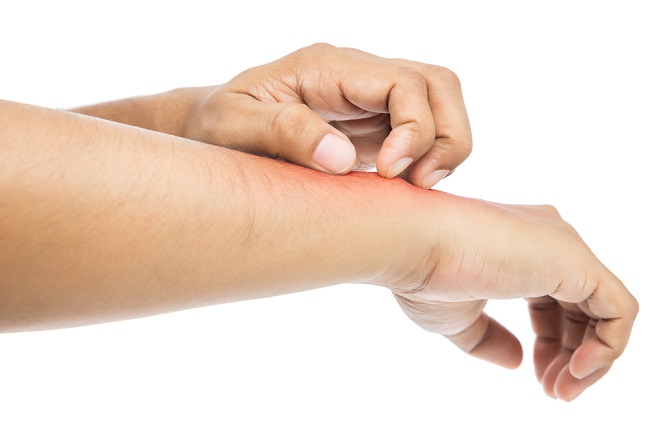Rheumatic polymyalgia is a disease that causes pain and muscle stiffness in certain body parts, such as the shoulders, neck, and pelvis. If left untreated, this disease can make it difficult for sufferers to move and work.
Rheumatic polymyalgia often affects the elderly, especially women. The appearance of symptoms of rheumatic polymyalgia occurs due to inflammation. However, until now, the exact cause of inflammation that triggers pain in rheumatic polymyalgia is not clearly known.

However, there are several factors that are thought to increase a person's risk of developing rheumatic polymyalgia, including genetic or hereditary factors, immune system disorders, autoimmune diseases, and the aging process.
With proper treatment, the symptoms of rheumatic polymyalgia usually subside and resolve. However, if left untreated, this disease can persist for quite a long time and further disturb the comfort of the sufferer.
Recognize the Symptoms of Rheumatic Polymyalgia
Rheumatic polymyalgia can be recognized by its characteristic symptoms, namely pain and muscle stiffness on both sides of the body in the morning or after a long period of immobility.
Pain from rheumatic polymyalgia often occurs in the shoulders, neck, upper arms, buttocks, pelvis, or thighs. Even so, pain due to rheumatic polymyalgia can also sometimes appear in the hands and feet. These symptoms can appear suddenly or gradually and last up to about 30–60 minutes.
In addition to pain in several parts of the body, rheumatic polymyalgia can also cause several other symptoms, namely:
- Fever
- Fatigue
- Feeling unwell
- Insomnia
- Decreased appetite
- Weight loss for no apparent reason
- Depression
The symptoms of rheumatic polymyalgia can be severe enough to make it difficult for the sufferer to perform daily activities, such as getting up from a chair, getting dressed, or getting out of bed.
Sometimes the symptoms of rheumatic polymyalgia can also appear along with other symptoms, such as headaches, jaw pain, and visual disturbances. These symptoms may be due to temporal arteritis. If not treated promptly, this condition can lead to stroke or blindness.
If you experience the above symptoms, you should immediately consult a rheumatologist for a proper diagnosis and treatment.
Some Steps for Handling Rheumatic Polymyalgia
The symptoms of rheumatic polymyalgia are sometimes similar to those of other diseases, such as: rheumatoid arthritis, lupus, or temporal arteritis (giant cell arteritis).
Therefore, to get the right diagnosis, you need to undergo an examination to the doctor. To confirm the diagnosis of rheumatic polymyalgia that you are suffering from, the doctor will perform a medical examination which includes a physical examination and supporting examinations in the form of blood tests, MRI, X-rays, and ultrasound.
If the results of the examination confirm that you are suffering from rheumatic polymyalgia, the doctor will provide treatment in the form of:
1. Administration of drugs
To reduce inflammation and pain due to rheumatic polymyalgia, doctors will prescribe corticosteroids, such as prednisone. Doctors will usually prescribe this drug in the long term to relieve the symptoms of rheumatic polymyalgia that you feel.
In addition to corticosteroid drugs, your doctor may also prescribe medication methotrexate to reduce inflammation and relieve symptoms that arise due to rheumatic polymyalgia.
This medication is usually given if you can't take corticosteroids or if your symptoms of polymyalgia rheumatica don't subside with corticosteroids.
2. Giving calcium and vitamin D supplements
Long-term use of corticosteroids can cause a number of side effects, for example, bone loss. To prevent these side effects, doctors will usually also prescribe calcium and vitamin D supplements.
In addition to supplements, you are also encouraged to consume foods and drinks high in calcium, such as milk, yogurt, seafood, and green vegetables, such as spinach, broccoli, and mustard greens.
3. Physiotherapy
After using corticosteroid drugs for some time, the symptoms of rheumatic polymyalgia usually subside. However, if you still find it difficult to move because your symptoms do not subside, your doctor may advise you to undergo physiotherapy and stay active.
Some of the treatment steps above cannot cure rheumatic polymyalgia, but they can overcome the symptoms you are feeling so that you can return to your activities comfortably.
During treatment, you need to have regular check-ups with your doctor to ensure that the correct dose of medication is used and reduce the risk of side effects from the treatment.









